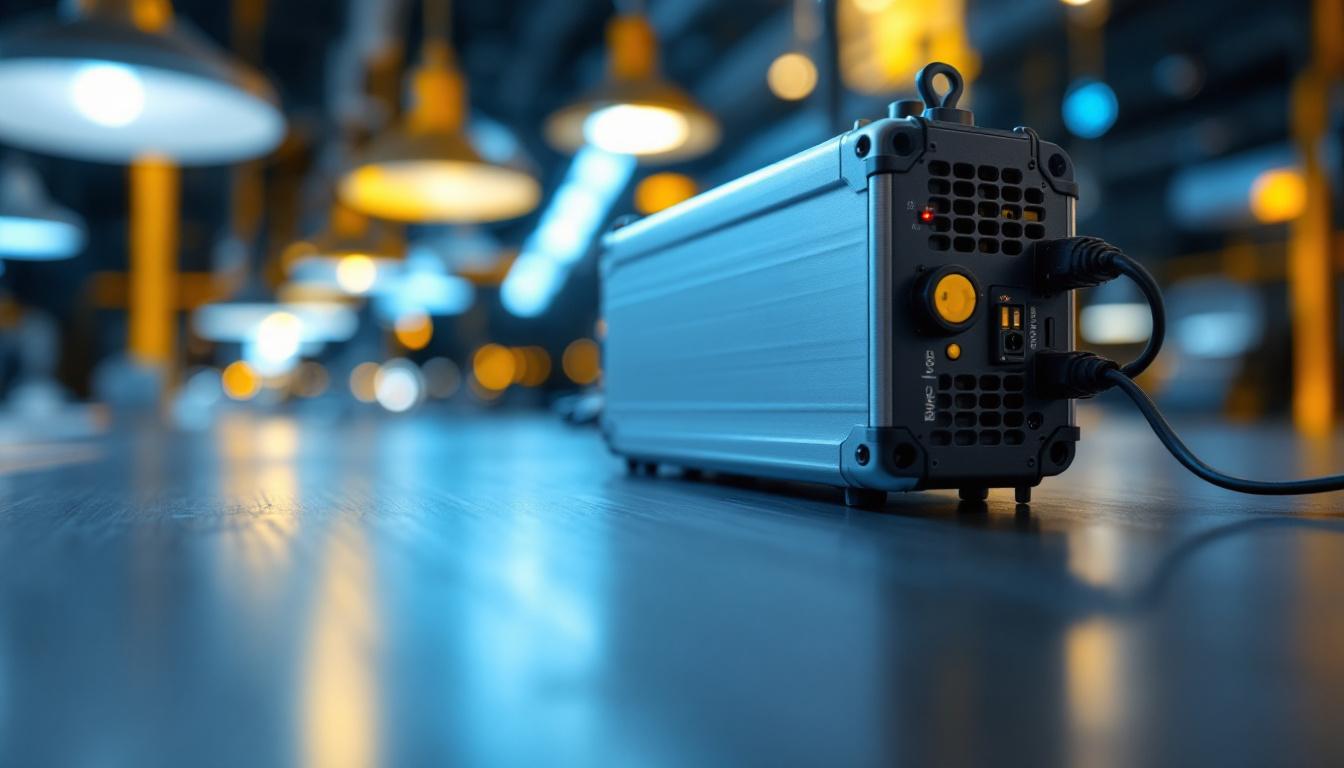
In the world of lighting installations, understanding the components that contribute to efficiency and performance is crucial for maximizing profitability. One of the key elements in many lighting systems is the ballast. This article delves into what a ballast is, its function, and how it can impact the overall success of lighting projects.
A ballast is an essential electrical device used in various types of lighting systems, particularly fluorescent and HID (high-intensity discharge) lamps. Its primary role is to regulate the current flowing through the lamp, ensuring that it operates effectively and safely. Without a ballast, a lamp would draw too much current, leading to overheating and potential failure.
There are two main types of ballasts: magnetic and electronic. Each type has its own set of characteristics and applications, which can influence the choice made by contractors during installations.
The primary function of a ballast is to provide the necessary starting voltage for the lamp and to limit the current during operation. This dual role is critical for ensuring that the lamp operates within its designed parameters. When a lamp is first turned on, the ballast generates a high voltage to initiate the arc between the electrodes. Once the lamp is lit, the ballast then regulates the current to prevent it from exceeding safe levels.
In addition to these functions, some ballasts also offer features such as dimming capabilities, which can enhance energy savings and provide flexibility in lighting design. Understanding these functionalities can help contractors make informed decisions that align with their project goals.
Moreover, the choice of ballast can significantly impact the overall performance and lifespan of the lighting system. For instance, electronic ballasts often come with advanced technology that can improve the color rendering index (CRI) of the light, making it appear more vibrant and true to color. This is particularly important in settings such as art galleries or retail spaces, where the quality of light can affect how products are perceived. Additionally, electronic ballasts can operate at a wider range of temperatures, making them suitable for various environments, from cold storage facilities to warm indoor spaces.
Furthermore, the installation of a ballast is not just a technical consideration; it also plays a role in energy efficiency and sustainability. With the increasing focus on reducing energy consumption and carbon footprints, selecting the right ballast can lead to significant savings on electricity bills over time. Many modern electronic ballasts are designed to meet or exceed energy efficiency standards, which can also qualify projects for rebates or incentives from utility companies. This aspect of ballast selection underscores the importance of considering both the immediate costs and the long-term benefits in any lighting project.
For lighting contractors, selecting the appropriate ballast is not just a matter of compatibility; it can significantly impact the overall performance and profitability of a lighting installation. The right ballast can enhance energy efficiency, improve lamp life, and reduce maintenance costs.
Energy efficiency is a critical consideration in any lighting project. Electronic ballasts, for instance, are known for their ability to reduce energy consumption compared to magnetic ballasts. By choosing an energy-efficient ballast, contractors can help their clients save on utility bills while also contributing to environmental sustainability.
Moreover, energy-efficient systems often qualify for rebates and incentives, further improving the project’s return on investment. This aspect can be a selling point for contractors when discussing project proposals with clients. Additionally, as energy regulations become more stringent, opting for energy-efficient ballasts can ensure compliance with local and national standards, thereby avoiding potential fines and enhancing the contractor’s reputation for reliability and foresight.
The lifespan of a lamp can be significantly influenced by the type of ballast used. Electronic ballasts typically provide a more stable current, which can lead to longer lamp life and reduced frequency of replacements. This not only benefits the client but also reduces the contractor’s workload in terms of maintenance and service calls.
In contrast, using a magnetic ballast may result in shorter lamp life due to the higher levels of heat generated and the less stable current. Contractors who prioritize longevity and reliability in their installations will find that investing in quality ballasts pays off in the long run. Furthermore, longer lamp life translates to fewer disruptions in service, which is especially crucial in commercial settings where consistent lighting is essential for operations. This reliability can enhance customer satisfaction and foster long-term relationships between contractors and clients, leading to repeat business and referrals.
While it may be tempting to opt for the least expensive ballast option, this decision can have long-term financial implications. Understanding the cost dynamics associated with different types of ballasts is essential for contractors looking to maximize profitability.
Electronic ballasts typically come with a higher upfront cost compared to magnetic ballasts. However, the energy savings and extended lamp life associated with electronic ballasts can lead to significant savings over time. Contractors should conduct a cost-benefit analysis to determine the best option for each project, considering both initial investments and long-term operational costs.
Additionally, clients may be more inclined to invest in higher-quality ballasts if they understand the potential for long-term savings and improved performance. Educating clients about these benefits can enhance trust and lead to more successful project outcomes.
Another important factor to consider is maintenance and replacement costs. Magnetic ballasts may require more frequent replacements and repairs, leading to increased costs over time. In contrast, electronic ballasts, with their longer lifespan and lower failure rates, can reduce these ongoing expenses.
By presenting a clear picture of the total cost of ownership to clients, contractors can justify the initial investment in higher-quality ballasts, ultimately leading to more satisfied customers and repeat business.
In the lighting industry, regulatory standards and compliance requirements are constantly evolving. Understanding these regulations is crucial for contractors to ensure that their installations meet all necessary guidelines.
Many regions have implemented energy codes that dictate the efficiency standards for lighting systems. Electronic ballasts often meet or exceed these requirements, making them a more compliant choice for contractors. Staying informed about local and national energy codes can help contractors avoid fines and ensure their projects are up to standard.
Moreover, compliance with energy codes can enhance a contractor’s reputation as a knowledgeable and responsible professional in the industry, potentially leading to more business opportunities.
As sustainability becomes a more pressing concern, contractors must also consider environmental regulations related to lighting systems. Electronic ballasts, which typically contain fewer hazardous materials and are more energy-efficient, align better with green building practices. This can be a significant selling point for clients looking to achieve LEED certification or other sustainability goals.
The lighting industry is continually evolving, with advancements in technology leading to new and improved ballast options. Staying abreast of these trends is essential for contractors who want to remain competitive and provide the best solutions to their clients.
One of the most exciting developments in ballast technology is the emergence of smart ballasts. These devices can communicate with building management systems, allowing for advanced control and monitoring of lighting systems. Features such as dimming, scheduling, and occupancy sensing can enhance energy efficiency and user experience.
Integrating smart ballasts into lighting installations not only improves functionality but can also be a significant selling point for clients looking to modernize their facilities. Contractors who embrace this technology can position themselves as leaders in the industry, attracting more clients and projects.
As the lighting industry shifts towards LED technology, the compatibility of ballasts with LED fixtures is becoming increasingly important. Many traditional ballasts are not designed to work with LED lamps, leading to potential performance issues. Contractors should prioritize ballasts that are specifically designed for LED applications to ensure optimal performance and longevity.
Understanding the nuances of LED compatibility can also open new avenues for contractors, allowing them to offer a broader range of solutions to clients looking to upgrade their lighting systems.
In the realm of lighting installations, the ballast plays a pivotal role in ensuring efficiency, performance, and profitability. By understanding the various types of ballasts, their functionalities, and their impact on energy savings and lamp life, contractors can make informed decisions that benefit both their clients and their bottom line.
Choosing the right ballast involves considering initial costs, long-term savings, compliance with regulations, and emerging trends in technology. By staying informed and adapting to changes in the industry, contractors can maximize their profitability while delivering high-quality lighting solutions to their clients.
Ultimately, a well-informed contractor is better equipped to navigate the complexities of lighting installations, ensuring successful projects that meet the needs of clients and contribute to a sustainable future.
Ready to elevate your lighting installations with the best in the business? Look no further than LumenWholesale for all your ballast needs. We provide contractors with high-quality, spec-grade lighting products at unbeatable wholesale prices, ensuring you get the most out of every project. Our selection not only meets but exceeds industry standards, offering you the reliability and performance you require. Plus, with free shipping on bulk orders, you can stock up on superior lighting solutions without worrying about hidden fees or compromises. Don’t settle for less—choose LumenWholesale for quality, affordability, and convenience. Wholesale Lighting at the Best Value is just a click away.

Discover why staying updated on outdoor LED lighting is crucial for every lighting contractor.

Discover innovative strategies to optimize urban and residential lighting by effectively utilizing lamp poles.

Discover how partnering with canopy light specialists can elevate your business.

Discover the transformative power of LED canister light bulbs for lighting contractors.